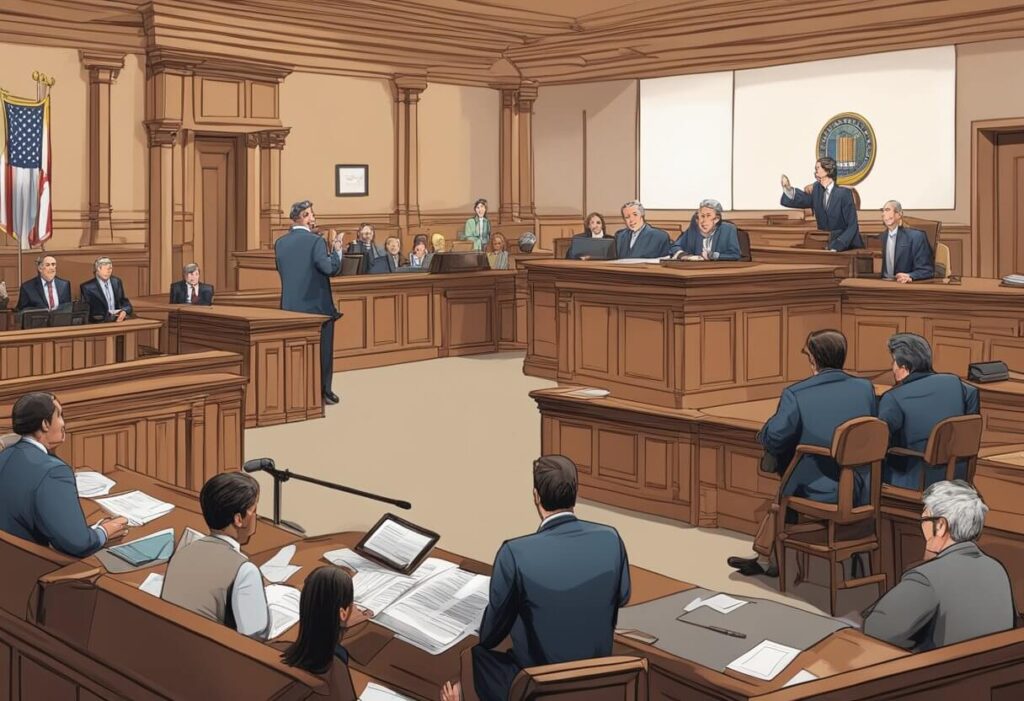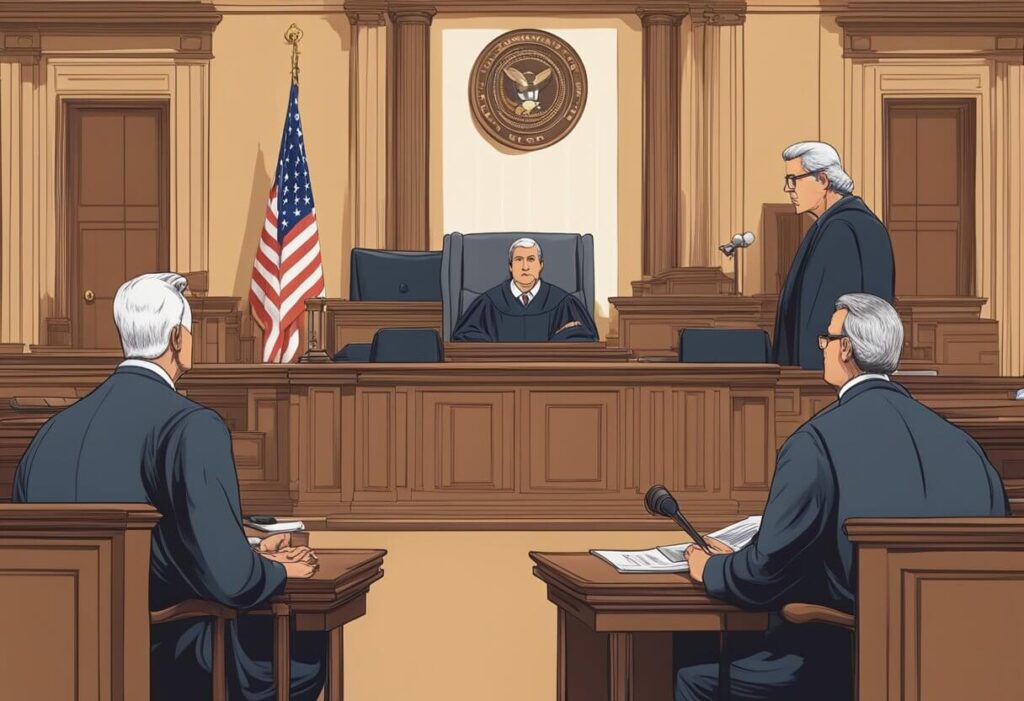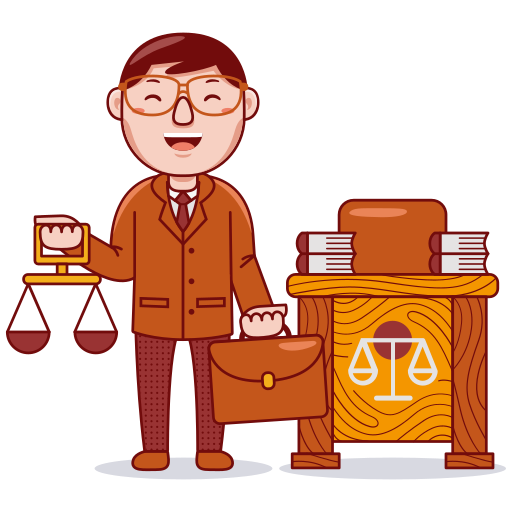Is Porn Truly Legal in the US? Clarifying the Complex Laws

Pornography and porn, often referred to simply as porn, refer to media depicting sexually explicit images, videos, writings, or sound recordings intended primarily for the purpose of sexual arousal. But with such sexually provocative and often controversial material, many wonder – is porn actually legal to access and view in the United States?
The short answer is yes – pornography is generally legal at the federal level for consenting adults over 18 in the US. However, individual states establish their own pornography laws, resulting in a complex patchwork of regulations. Additionally, while general pornography is lawful, many specific types remain illegal, including notably child pornography and obscene pornography.
In this in-depth blog post, we’ll explore questions around pornography laws in detail, including:
- What constitutes pornography in a legal sense and how is it regulated
- Whether pornography is protected free speech or subject to restrictions
- What types of pornography are completely illegal
- How pornography laws differ from state to state
- The legal repercussions for various porn-related violations
- How pornography regulations vary worldwide
- Ongoing debates around pornography legality and censorship
- When viewing porn transitions into a punishable sex crime
- Available defense if facing charges for illegal pornography
Armed with clarification around these key issues, readers will have a clearer grasp on exactly what is and is not lawful when it comes to pornography in the modern United States.
What Constitutes Pornography in the Eyes of the Law?

In order to determine if porn is legal, the first necessary step involves defining pornography in a legal sense. According to federal law under 18 U.S. Code § 1460, pornography or “obscene material” encompasses media or live conduct depicting or describing sexual or excretory activities in an patently offensive way designed to appeal towards prurient interests according to the standards of an average person. Offensive presentations of ultimate sexual acts, masturbation, excretory functions, lewd exhibitions of genitals, and sadomasochistic sexual abuse are among the forms of pornography contemplated under the law.
The pivotal determination around whether pornography qualifies as unlawful obscenity turns on meeting the conditions of the Miller test established in the 1973 Supreme Court case Miller v California. The Miller standards define obscenity as:
- An average person in the community finding that the pornographic work appeals to prurient interests according to contemporary community standards
- The pornographic work depicting sexual conduct in a clearly offensive way
- The work, as a whole, lacking serious literary, artistic, scientific, or political value
Hence, pornography that meets these criteria may be subject to greater regulation and consequences compared to general protected pornographic expressions. The responsibility for making determinations of obscenity under the Miller test falls on juries in relevant legal proceedings.
Beyond establishing definitions around unlawful obscenity, legal codes also impose further constraints on certain forms of pornographic distribution, even when content itself may not breach obscenity laws. Federal law prohibits distribution of obscene materials through the mail or interstate commerce. Additionally, it is illegal under federal law to distribute pornography to minors under 18 years of age. We’ll explore some of these concerns around specific illegal forms of pornography later on.
Is Viewing Pornography Legal for Consenting Adults?

While the legal system places constraints on certain aspects of pornographic materials, generally speaking, individuals over 18 can lawfully access pornography depicting consenting adult subjects under free speech protections.
The Supreme Court has consistently ruled that pornography merits safeguarding as constitutionally-protected expression under the First Amendment unless it crosses boundaries into illegal realms of obscenity or child pornography. Lawfully-produced erotic media lies at the heart of free speech rights central to America’s legal foundation.
Hence, from a broad federal standpoint, Americans can freely view general pornography in media formats including writings, images, video, audio, games, performances, and other creative expressions so long they meet two essential criteria:
- They only depict consenting adults over the age of 18
- The content does not breach state-level community standards for obscenity
As long as pornography features adult subjects and contains somekernel of redeeming serious value according to local sensitivities, law-abiding citizens can access and watch such media without expecting criminal consequences. Of course, we will explore some notable exceptions involving illegal varieties of pornography later on.
This legal protection gives rise to a thriving pornography industry centered in America producing lawful erotic materials. While exact estimates vary, one often-cited statistic suggests the porn industry in the US generates over $15 billion – $97 billion annually. This economic factor likely sways against heavy pornography prohibitions.
So to summarize the lawful status of general pornography – adults can legally access non-obscene pornographic content depicting other consenting adults. Next, we’ll detail some notable exceptions where porn categorically crosses into illegality.
What Types of Pornography are Completely Illegal in the United States?
While U.S. laws protect pornography involving consenting adults in general, several clearly defined pornography categories face outright bans owing to their perceived societal dangers. Possession or distribution of these illicit materials risks serious criminal consequences. Major illegal pornography varieties include:
Child Pornography
Arguably the most universally reviled form of pornography involves depictions of sexually explicit conduct with children. Multiple federal laws, including 18 U.S. Code §§ 2251–2260, unambiguously prohibit producing, distributing, receiving, or possessing child pornography as an intolerable offense. The definition of child pornography contemplates actual minors or virtual photographic depictions of minors engaged in graphic sexual scenarios. Amassed legal precedents deny any First Amendment protection to child pornographic materials.
Given the severe harm associated with child sexual exploitation, penalties for associated pornography crimes carry appropriately harsh sentences. Merely possessing child pornography risks up to 10 years imprisonment under federal law. Aggravating factors like intending to distribute or produce child porn can lengthen prison terms to 20 years or more plus severe fines. Registration as a sex offender also accompanies many child pornography convictions as standard practice.
Obscene Pornography
Even pornography solely depicting consenting adults can still earn illegal classification as obscenity if deemed to breach community decency standards under the Miller test. Patently offensive presentations of hard-core sexual content including ultimate sex acts, masturbation, excretion functions, and graphic exhibitions of genitals might qualify as impermissible obscenity when lacking any artistic or scientific merit.
However, obscenity designations require satisfying somewhat vague criteria based on local sensitivities and judicious determinations, meaning the obscene status of borderline materials situates in a legal grey area. Still, clear-cut obscenity crosses into illegality. The federal government and states have passed various laws, like the California Penal Code 311, criminalizing distribution of obscene writings, images, recordings, and performances.
Extreme Pornography
Some states classify particular forms of hard-core content as “extreme pornography” warranting distinct criminal statutes beyond standard obscenity laws. These special legal categorizations aim to protect participants potentially suffering harm or degradation in production as well as limiting exposure to society as a whole.
Federal law does not currently define or prohibit extreme pornography. However, the United Kingdom and some U.S. states like California Penal Code 313 extend their legal codes to target possession of certain graphic materials involving:
- Violence or serious bodily injury
- Necrophilia
- Bestiality
Hence, while society continues debating access to provocative erotica between consenting adults, clearly illegal child porn, obscenity, and extreme porn face unambiguous bans carrying steep criminal consequences.
What are the Legal Penalties and Prison Sentences for Pornography Violations?

Given the supreme concern around shielding minors from sexual exploitation, laws imposing severe punishment for child pornography possession prove well justified. As covered earlier, federal law issues prison sentences ranging from 10 to 20 years for possessing, producing, or distributing child pornography depending on specific offenses and aggravating factors. Large 6-figure fines often supplement incarceration.
The majority of U.S. states classify illegal child pornography activities like distributing or simply possessing illicit content as felonies mandating multi-year sentences and large fines exceeding $5,000 to $10,000 in most instances. Sex offender registration also accompanies many child porn convictions.
Similarly, obscenity crimes for trafficking hard core content deemed utterly without merits under community standards also potentially lead to multiple years imprisonment along with major fines in the tens of thousands of dollars. Charges related to obscene materials feature especially complex penalties given the need for subjective determinations by judges and juries.
In summary, all varieties of illegal pornography bear steep punishments, particularly child pornography. Even simple possession risks years behind bars plus lasting stigma as a sex offender in many cases.
Next, we’ll examine how states differ regarding pornography laws before tackling concerns around internet pornography access.
How do Laws Concerning Pornography Vary Between States?
While federal statutes regulate interstate trafficking of obscenity and categorically ban child pornography, individual states enact their own local laws governing access and distribution of pornography. This results in a complex legal patchwork surrounding pornography across the country. States take varying approaches regarding:
- Defining obscenity
- Restricting access to minors
- Zoning and displays
- Taxation
More progressive states like California interpret obscenity relatively narrowly thanks to free speech precedent established in landmark Supreme Court cases like Miller v California originating there. However, stricter Bible Belt states boast harsher standards around interpreting community decency and displays. Utah proves especially firm regarding policies designed to “mitigate immorality” stemming from pornography deemed harmful. Hence, the precise legality of pornographic borderline materials differs across states pending local sensitivities.
Most states also enact tighter constraints around exposing minors to pornography or sexually-oriented businesses compared to access for consenting adults. Zoning laws frequently relegate stores selling erotic materials exclusively to seedier red-light districts. Sin taxes specifically targeting the pornography industry also appear in legislation periodically despite facing skepticism as likely violations against freedom of expression.
In summary, states select their own varying stances on pornography regulations within federal legal guardrails. Residents and visitors should acquaint themselves with local laws concerning pornography when moving across different jurisdictions, especially regarding classifications of obscenity.
Can You Legally Access Pornography via Internet Sites and Sources?
Given the dominance of Internet-based media, a common legal question surrounding pornography probes whether adults can freely visit pornographic websites and online sources under federal protections for free speech. Or do restrictions against obscenity extend online?
The short answer is yes – generally, consenting adults can legally access pornography web sites so long as the content features other adult subjects and avoids breaching the local definition of obscenity. No federal laws explicitly outlaw operating or visiting adult-oriented web sites not falling into illegal realms. So pornography remains lawful for adults to access on the Internet pending state community standards on graphic sexual content qualifying as potential obscenity.
One notable caveat concerns the omission of viable age-verification systems across pornography websites to block potential access by minors. Self-policing by web masters on age minimums proves limited. The absence of reliably enforced age restrictions complicates arguments to treat Internet porn as protected speech if vulnerable youth can readily access graphic materials. Periodically, initiatives surface to mandate pornography sites implement effective age screening, but practical and ethical barriers arise.
While U.S. laws allow consenting adults to freely view online pornography within reasonable graphic limits, citizens traveling abroad or browsing foreign websites should remember other countries regulate Internet access differently. Stringent nations like China completely block pornography sites along with other content deemed morally questionable. No assumptions about pornography access on the web can be made overseas.
Can Consenting Adults Lawfully Participate and Perform in Pornography Legally?
A question related to lawful access for viewers involves whether consenting adult performers can legally participate in producing pornography without expecting criminal charges thanks to First Amendment protections.
Generally yes – bureaucratic permitting aside in certain localities – adult men and women maintaining autonomy can choose to perform in lawful erotic productions featuring only consenting adult activities without legal repercussions so long as standard labor practices are followed and exploitation avoided. No federal or state laws prohibit distributing depictions of legal sexual acts between verifiably consenting adults.
However, some obscenity statutes target participants in certain graphic live performances without extensions to filmed recreations. Regional legal codes also require special licensing for establishments offering strip tease, erotic dance, or adult entertainment. But legal distinctions around lawful pornography versus potential prostitution charges complicate determinations. In general, legitimate productions avoid legal issues.
Hence, outside narrow lines dividing lawful erotica from criminal obscenity and blatant prostitution, consenting adults may participate in legal pornography productions without expecting consequences. However, ethical concerns around coercion and exploitation in amateur productions with limited oversight still stir debates in some cases.
What About Possessing Pornography Involving Sexually Explicit Conduct with a Minor?
While general pornography and even graphic depictions of consenting adult sexual acts may escape prosecution, possessions depicting minors subject to sexual exploitation categorically violate several serious laws with extreme penalties attached.
As described earlier, a wide range of federal and state statutes prohibit producing, distributing, receiving or even simply possessing illegal child pornography. Violations for crimes related to child pornography can lead to decades behind bars plus lasting stigma as registered sex offenders. Certain state laws also prohibit possession of prohibited media including writings, recordings, and visual productions depicting minors in mere states of nudity absent overt sexual contexts owing to unnecessary exploitation concerns. But federal precedents place tighter constraints on such materials implicating First Amendment rights.
In short, when it comes to pornography, any media depicting sexual conduct with a known minor proves unambiguously illegal across all American jurisdictions warranting prosecution. Care must be taken to confirm subjects meet adult age criteria in any productions. No mercy is shown toward tolerating media furthering child exploitation in any form.
How do Countries Worldwide Compare Regarding Laws on Pornography?
While the United States legal system generally leans towards protected pornography with notable restrictions described, global attitudes exhibit considerable diversity pending cultural sensitivities. Broadly speaking, progressive western nations mostly allow pornography within constraints like shielding minors. Meanwhile, conservative countries governed by strong social traditions or religious morals swing towards heavy censorship or outright banning of pornographic media.
Europe largely permits pornography for competent adults paralleling North America’s stance. However, certain regions restrict explicit erotic expressions. Limiting minors’ access proves somewhat controversial with proposed identity screening requirements for websites stirring protests grounded in anonymity concerns. Fines and internet service loss may penalize violations.
Conversely, Asia features more variability pending local values. Japan maintains notoriety for pioneering graphic explorations. Meanwhile, restrictive nations like China impose harsh censorship infrastructure encapsulating pornography as contradicting communist social ideals. The Muslim world enacts strict religious prohibitions on sexual content including pornography across domains like media, education, and commerce. Censorship proves the norm.
Ultimately, regulations and attitudes surrounding pornography correlate strongly with regional ideals on appropriate expressions of sexuality. The United States lies somewhere in the middle. Understanding different cultural assumptions remains vital for international travelers and transactions.
What are the Continuing Legal Debates Around Pornography Censorship and Restrictions?
The lawful status of pornography continues sparking legal controversy in America and worldwide pleading for clarity amidst ethical grays. Those arguing against proliferation of graphic sexual content including anti-pornography feminists cite concerns around exploitation and risks normalizing violent attitudes. Public health worries involving negative impacts like addiction and abusive behaviors also arise.
However, free speech advocates argue consenting adults deserve accessing lawful erotic expressions. Classifying materials as thought crimes proves problematic absent concrete harmful actions. Data on societal damages from pornography remains inconclusive and subjective. Necessity and feasibility concerns shadow potential national censorship regimes.
Ongoing technological shifts around digital media and evolving social norms further complicate legal treatment of erotic content. Lawmakers continue wrestling to balance rights to free speech for adults against real dangers involving the most vulnerable. Uniform consensus on responsible pornography laws appears elusive both across American state lines and national borders.
When Does Viewing Pornography Become an Illegal Sex Crime?
While lawful forms of pornography provide adults an undeniable legal right in American society, viewing pornographic content becomes an illegal sex crime in certain contexts crossing lines through obscenity, exploitation, or abusive behaviors.
Any pornography clearly breaching the local interpretation of obscenity under community standards proves unlawful by definition when lacking serious merit. Trafficking such illegal materials including certain extreme sexual fetishes risks prosecution for obscenity crimes.
Additionally, coercive exposure of minors to graphic pornography against their wishes or juvenile ability to consent constitutes criminal child abuse. Authority figures like educators and clergy bear special duties to shield underage individuals from inappropriate sexualized content. Violating such responsibilities provokes charges for moral corruption, endangerment, or grooming precursor offenses leading to molestation.
Further, behaviors that progress from pornography viewing to manifest illegal actions also obviously warrant charges as sex crimes. Allowing erotic media to inspire non-consensual stalking, abusive domestic relationships, human trafficking rings, or contact child exploitation all demand prompt prosecution commensurate with specific offenses broken reflecting how pornography crossed from legal entertainment to enabling or directly causing harm illegally.
Finally, while lawful in isolation, accumulating massive stockpiles deemed unnecessary for personal use may signal obsessions tied to the likelihood of harm meriting psychological intervention or limits on continued access to pornography. As always, avoiding harm remains the ultimate standard separating innocent liberties from criminal tendencies warranting consequences.
How Can a Defense Lawyer Assist If One Faces Charges Related to Prohibited Pornography Possession?
Given the high stakes accompanying illegal pornography charges often resulting in lasting stigma from sex offender registration requirements, retaining an experienced criminal defense lawyer proves critical to navigate prosecutors pressing for harsh sentences. The complexity of laws regulating obscenity exacerbate chances of ambiguous evidence failing to clearly indicate perpetrator intentions or questionable content sources.
Whether charges stem from allegations of downloading unambiguous child pornography or receiving questionable materials absent full understanding of specific graphic depictions at issue, dedicated defense counsel intimately familiar with enforcing jurisdiction’s intricate pornography laws can mean the difference between exoneration, charges reduced to fines, or years in prison plus restrictions on future liberties.
Savvy defense lawyers understand how to rigorously evaluate confounding evidence to locate plausible alternatives explaining questionable Internet search traces or materials detected by law enforcement. They also recognize what materials courts historically protected as free speech versus categorically illegal content. Mounting persuasive cases based on these insights before biased judges often serves vital in contested rulings needing to balance First Amendment rights against community standards.
In addition, skilled lawyers identify procedural technicalities regarding unconstitutional surveillance methods, omitted Miranda warnings, or illegal searches possibly throwing out damning evidence outright on process grounds before arguments become necessary around the particular pornography itself. Waging an assertive defense frequently secures positive outcomes even in scenarios unfairly presuming guilt at first glance.
Retaining sharp legal guidance from defense attorneys intimately acquainted with all nuances around the law proves invaluable to avoid dire consequences in these high-stakes pornography possession cases implicating freedom and reputation. Relying on such expertise offers the best prospects for just outcomes during dire circumstances.
Conclusion
As discussed extensively, while lawful in general contexts featuring consenting adult subjects absent breaching state obscenity standards or limits shielding minors, many Americans likely underestimate the places pornography laws impose unambiguous constraints reflecting societal lines prohibiting abusive or patently dangerous sexual behaviors. Legal codes prohibit all child pornography owing to risks of exploitation along with certain extreme materials deemed utterly without merit. Laws also complicate pornography regulations surrounding Internet access and minors depending on locations. Penalties for violations always prove severe, particularly with vulnerable parties.
Ongoing debates likely continue reshaping pornography laws in western cultures. But when in doubt, avoiding harm serves as the ultimate legal standard separating lawful erotic liberties from punishable abuses of sexuality requiring intervention to protect citizens. This deeper look clarifying the nuances around exactly what constitutes legal versus prohibited pornography across jurisdictions hopefully empowers readers to make responsible choices ultimately aligning with both personal fulfillment and societal order.






